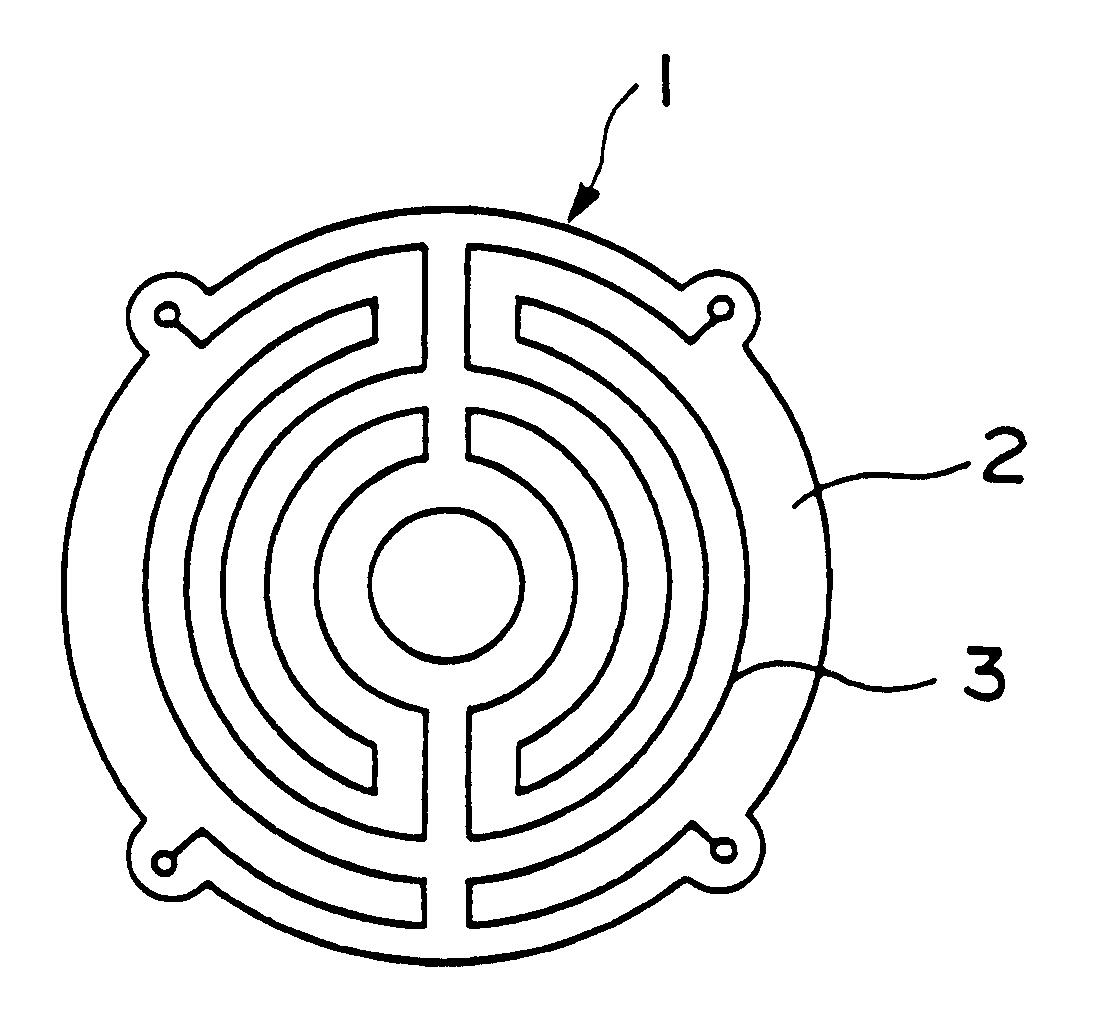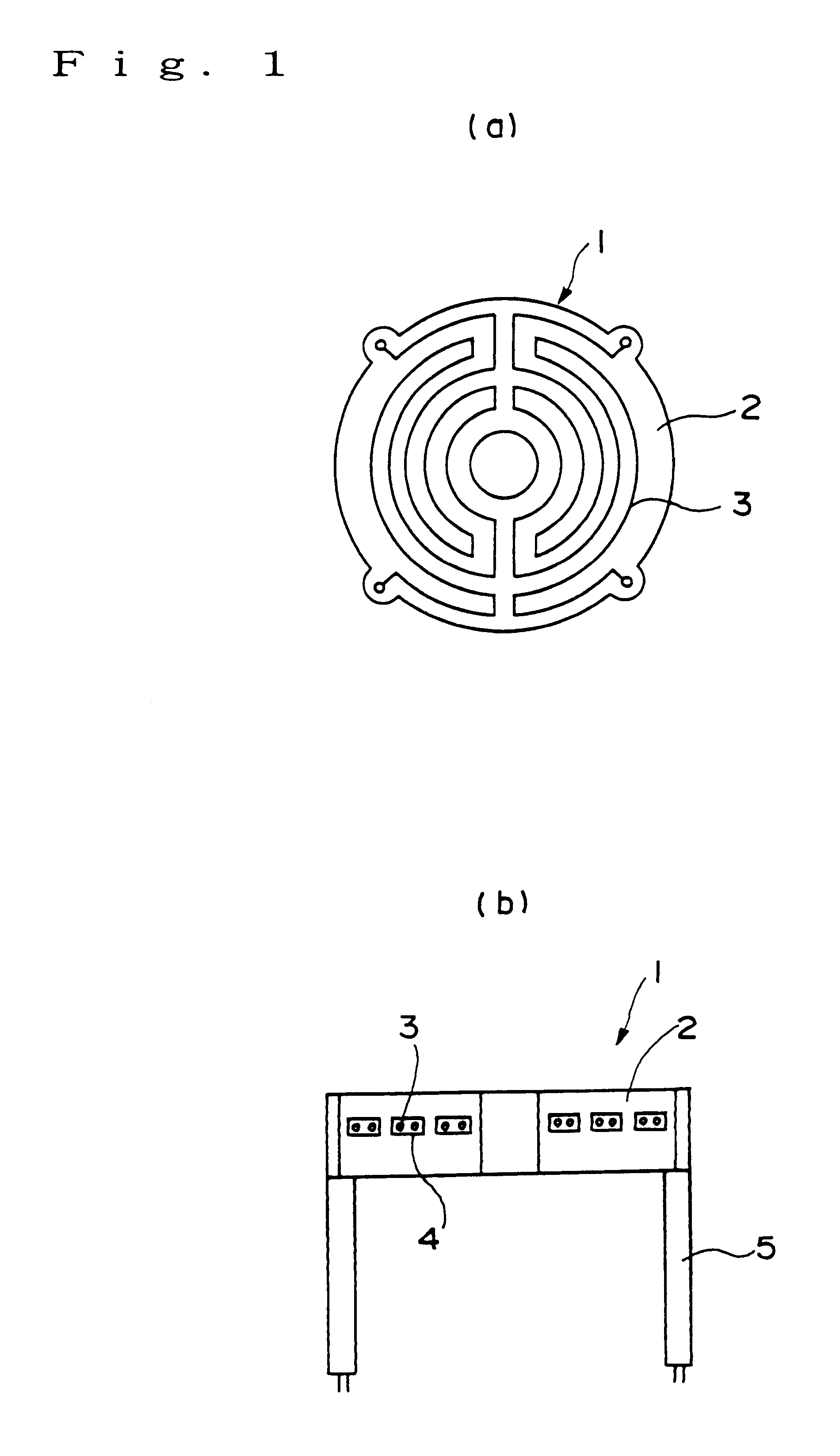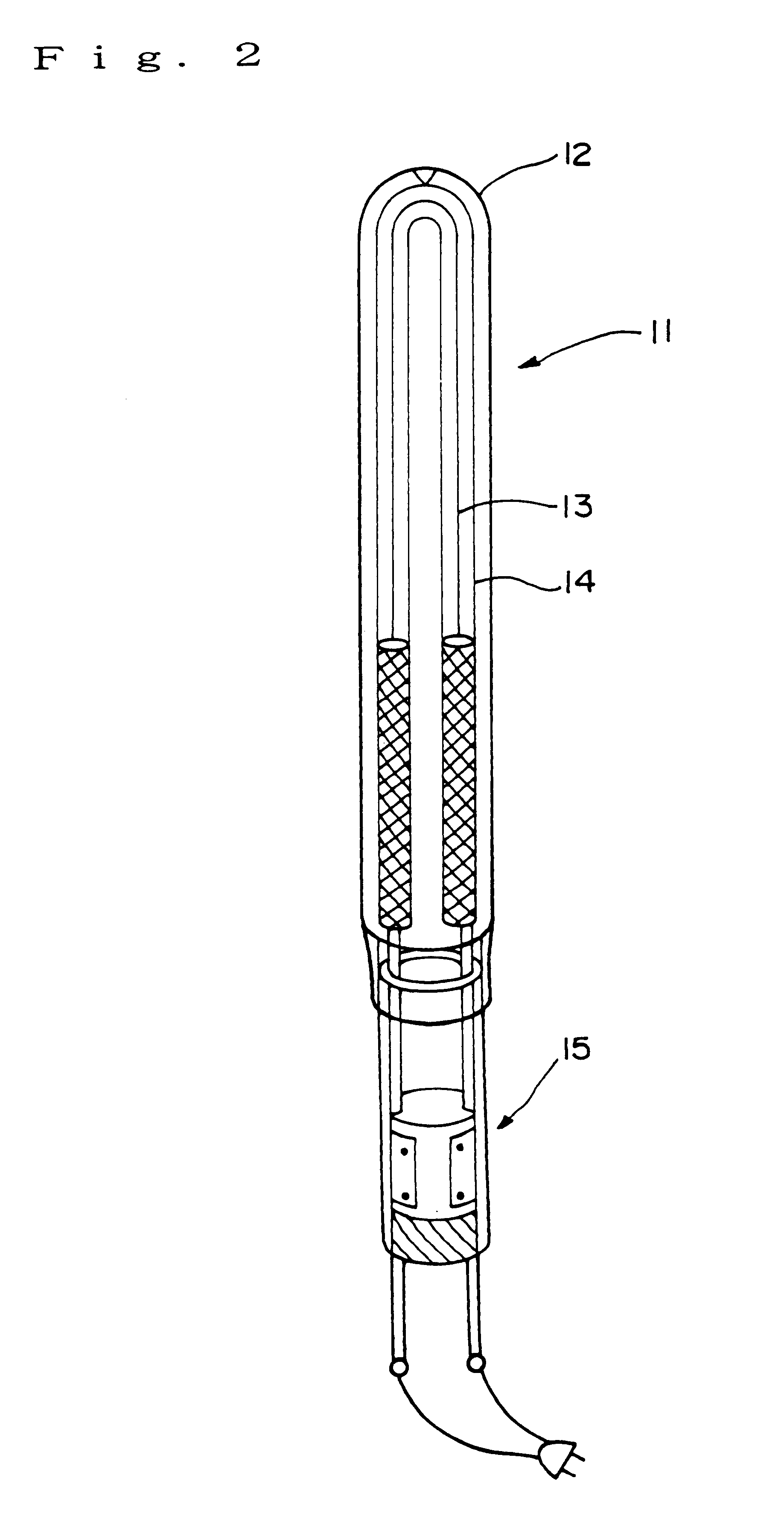Heater sealed with carbon wire heating element
a heating element and carbon wire technology, applied in the field of heating elements sealed with carbon wire heating elements, can solve the problems of unstable heating element performance, affecting the performance of heating elements, and difficulty in properly adjusting various physical properties including resistan
- Summary
- Abstract
- Description
- Claims
- Application Information
AI Technical Summary
Benefits of technology
Problems solved by technology
Method used
Image
Examples
Embodiment Construction
Then, carbon wires are prepared by binding 3000 pieces of various carbon single fibers (including one PAN-based carbon fiber and one pitch-based carbon fiber) each having a diameter of 7 .mu.m into a bundle and knitting 9 such bundles into a knitted cord having a diameter of 2 mm. (each carbon wire having a length of 100 meters)
Among said carbon wires, those of each selected type are subjected to a graphitization process at a temperature of 2300.degree. C. in an argon gas atmosphere (0.01 Torr) in a heat treatment reactor.
The thus graphitized various types of carbon single fibers and untreated such various types of carbon single fibers are selected to measure their interlayer spacing d (002) and crystallite size Lc (002) using Gakushin-method.
The result obtained is shown in Table 1.
Further, the graphitized PAN (polyacrylonitrile) type carbon wires and untreated counterparts are respectively subjected to measurement for respective electric resistances thereof (5 times for each type) ...
PUM
| Property | Measurement | Unit |
|---|---|---|
| crystallite size Lc | aaaaa | aaaaa |
| crystallite size Lc | aaaaa | aaaaa |
| elongation performance | aaaaa | aaaaa |
Abstract
Description
Claims
Application Information
 Login to View More
Login to View More - R&D
- Intellectual Property
- Life Sciences
- Materials
- Tech Scout
- Unparalleled Data Quality
- Higher Quality Content
- 60% Fewer Hallucinations
Browse by: Latest US Patents, China's latest patents, Technical Efficacy Thesaurus, Application Domain, Technology Topic, Popular Technical Reports.
© 2025 PatSnap. All rights reserved.Legal|Privacy policy|Modern Slavery Act Transparency Statement|Sitemap|About US| Contact US: help@patsnap.com



